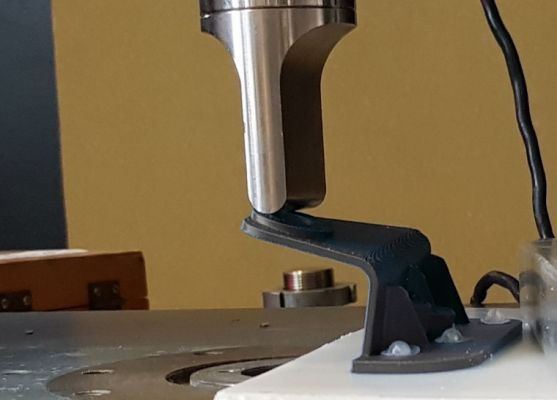Trials underway on new 3D Printing Material & Mobile App for the Auto Repair Industry
Swinburne University of Technology started testing its newly formulated 3D printing polypropylene-based material this week. The world-first development is a collaboration with industry partner Tradiebot Industries and with co-investment from the Innovative Manufacturing CRC (IMCRC), the material will be used in the automotive collision repair industry to 3D print replacement plastic bumper bar tabs and headlight lugs.
A mobile app is currently also being developed by Tradiebot, using state of the art Augmented Reality (AR), that will enable collision repair technicians to perform quality control on repairs by overlaying an original CAD using the application via a smart phone, tablet or smart glasses. The application will have the ability to scan broken plastic parts, generate a 3D model of the part and then enable the user to create, or select from a library, the required missing component. This missing component will then be 3D printed using the new automotive compatible material. The developed replacement parts will be stored in a digital library of pre-designed parts, ready for download and 3D printing.
The advanced plastic material is compatible with automotive grade injection moulded plastic and will increase the number of parts being repaired and reused during the collision repair process, rather than these parts being sent to landfill or waste, due to missing tabs and lugs.
When ready for industry use, the solution will offer technicians a path to up-skill through learning to repair these parts and designing new replacement components for parts that would have previously required a brand-new replacement.
IMCRC functions as a catalyst in this research collaboration, co-investing in 3D printing and material innovation that creates opportunities not just for Tradiebot and the automotive collision repair industry but for Australia’s broader manufacturing sector.
David Chuter, CEO and Managing Director at IMCRC, sees the progress of the research collaboration as an indication of the things to come. David Chuter said:
“From day one Tradiebot and Swinburne University have been working hand-in-hand, embracing opportunities as well as challenges to drive progress and get the job done. Seeing them test new 3D printing materials that did not exist two years ago and explore digital technology to enhance the user experience is very rewarding.”

